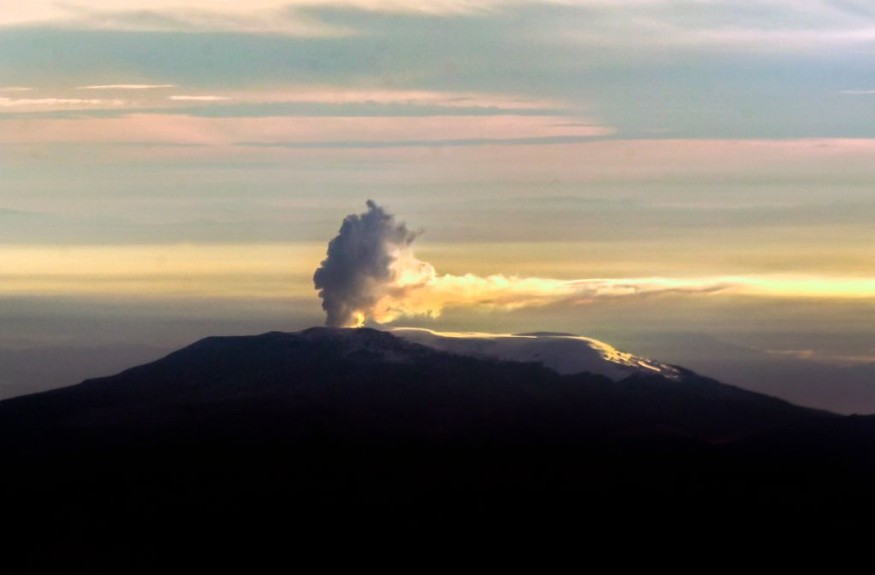Colombia Volcano Rising Alert Level Prompts Evacuation of Families

Following elevated levels of seismic activity at Nevado del Ruiz volcano in the country's center that could indicate an eruption in the next few days or weeks, Colombia authorities evacuated 40 families from their homes on Monday, AP reports.
Along with closing the famous national park that encircles the Nevado del Ruiz volcano, authorities announced that schools within a six-mile radius of the crater would only offer online classes when students returned from their Easter break the following week.
The governor of the Colombian province of Caldas, to the west of the 5,300-meter-tall (17,000-foot) volcano, has stated that these actions are preventive in nature.
Villamaria, where Velasquez spoke, was the first community to be evacuated because of its proximity to the volcano's crater.
Many settlements can be found along the waterways that begin at the peak of Nevado del Ruiz.
Colombia Volcano Alert Level Raised from Yellow to Orange Warning
An eruption larger than any in the past ten years may occur in the coming days or weeks, prompting the Colombian Geological Service (SGC) to increase the alert level from yellow to orange, per BBC.
The SGC stated in a release that the volcano had been experiencing minor eruptions for the past decade but that its seismic activity had increased on March 24. Geologists claim they are recording thousands of tremors daily, unprecedented in the history of volcano monitoring.
There is no way to predict with any degree of certainty whether the volcano's activity will rise further or decrease again, according to SVG.
The Nevado del Ruiz's threat level has not been raised since 2012 when it was maintained at orange for over a month in April and increased to red for two days in June. But there was no significant eruption at that time.
Colombia Volcano Nevado del Ruiz
The Andean volcano Nevado del Ruiz can be found in central Colombia, around 80 miles (129 kilometers) from Bogota.
It lies within the "Ring of Fire," an area of intense seismic activity stretching across the Pacific Ocean from Chile to Alaska in the United States east to New Zealand and Russia west. Al Jazeera noted.
The Smithsonian Institution's Global Volcanism Program estimates that the Nevado del Ruiz, a glacier-covered mountain with a kilometer-wide crater at its summit, has erupted periodically for the past 8,600 years.
The first eruption seen and written down was in 1570, and the current time of explosions began in 2014, according to the program's website.
However, the volcano's most well-known explosion occurred on November 13, 1985, when it released ash, gas, and magma.
An estimated 20 million cubic meters (706 million cubic feet) of ash and debris were ejected from the Colombia volcano, according to the US National Oceanic and Atmospheric Administration.
Lahars, made of rock, water, and other volcanic elements, erupted violently after melting snowcaps. The debris and mud from these lahars engulfed the village of Armero, located in a river valley close to the volcano. Roughly 21,000 died in that incident.
The Global Volcanism Program ranks it the fourth deadliest single explosion in history and the deadliest in South America.
This is owned by Latin Post.
Written by: Bert Hoover
WATCH: Nevado del Ruiz Volcano Update; Potential for a Large Eruption, Alert Level Increased - From GeologyHub
Subscribe to Latin Post!
Sign up for our free newsletter for the Latest coverage!
















